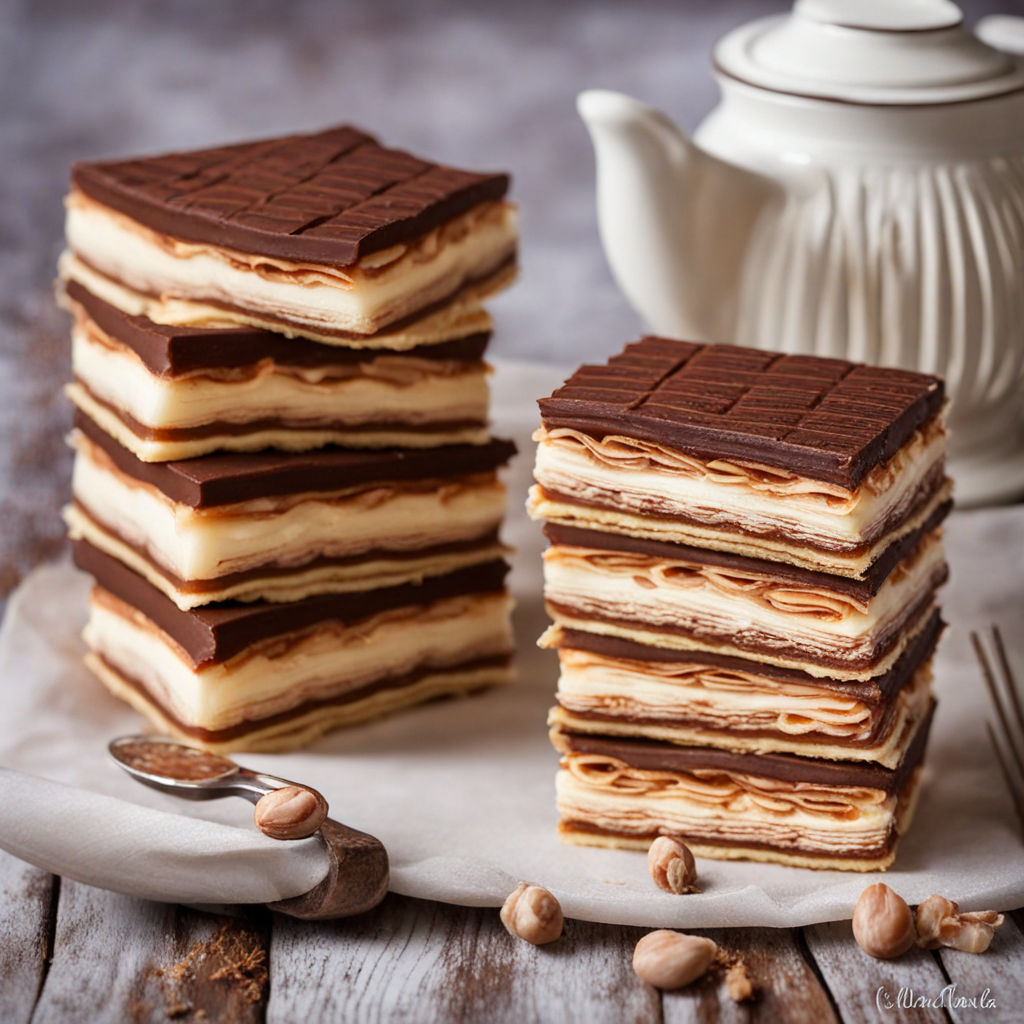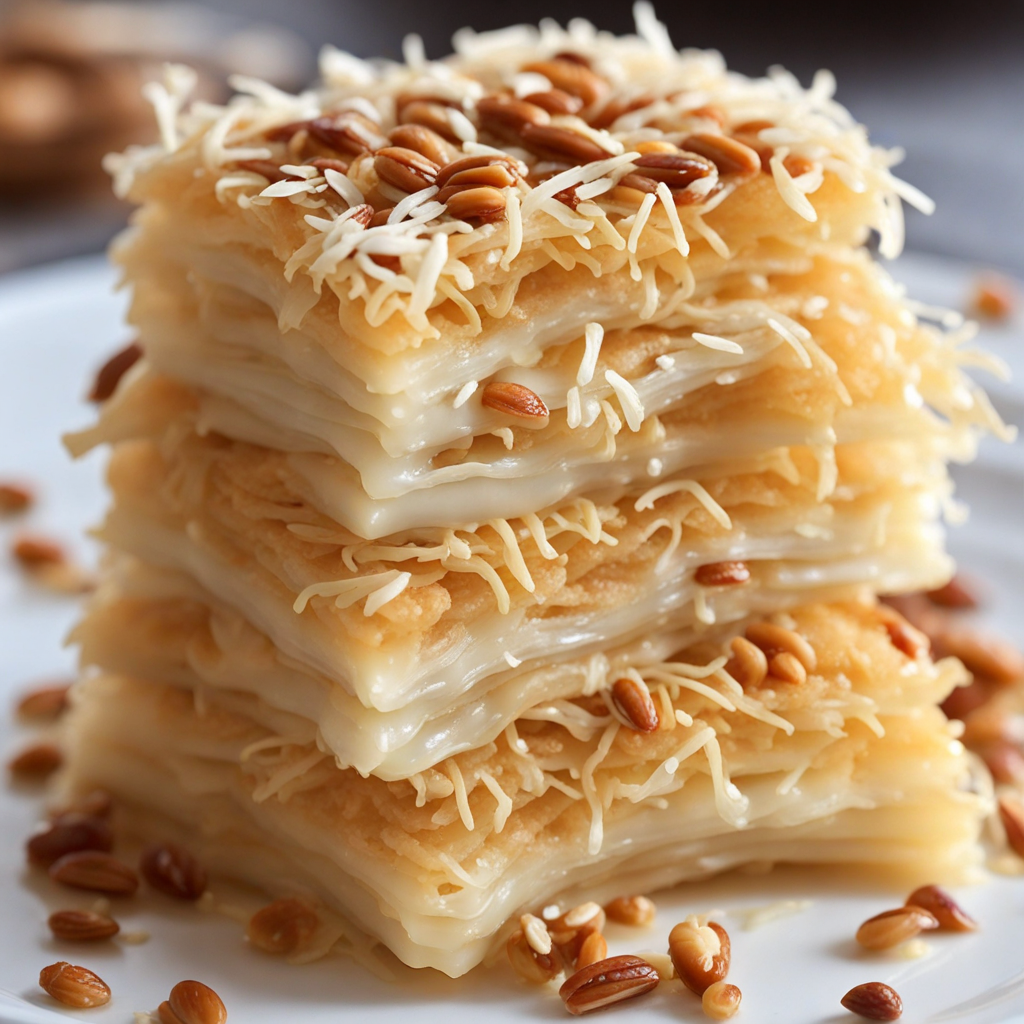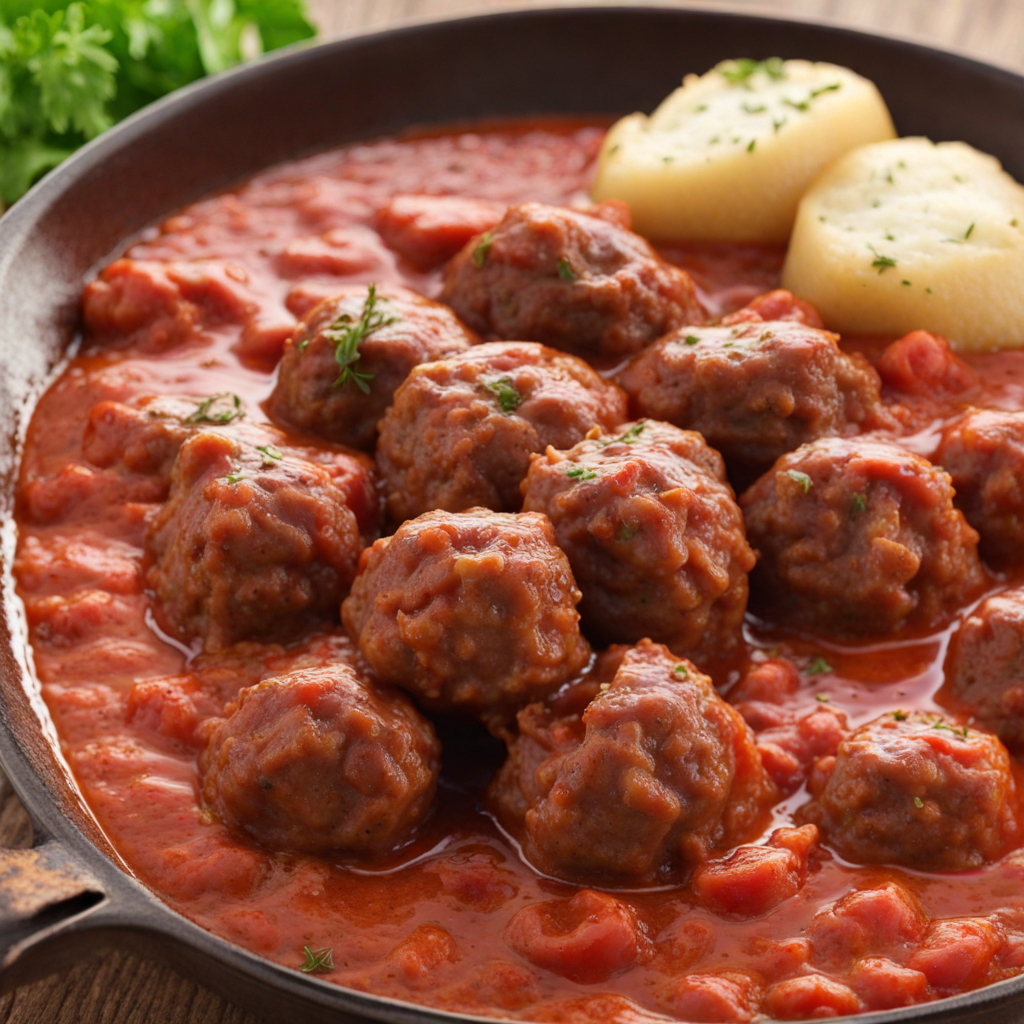Oblande
Oblande is a delightful confectionery hailing from Bosnia and Herzegovina, characterized by its thin, crispy wafers layered with a rich and creamy filling. The wafers are usually made from a blend of flour, sugar, and eggs, baked to a delicate crispness that perfectly complements the luscious filling. This filling is often a sweet mixture of ground nuts, chocolate, or sometimes a combination of both, providing a satisfying crunch and a burst of flavor in every bite. The contrast between the crisp wafers and the smooth, indulgent filling creates a delightful textural experience that is both comforting and exciting. The preparation of Oblande is often a labor of love, with each layer carefully crafted to achieve the perfect balance of sweetness and texture. The layers are assembled meticulously, with each wafer providing structure and the filling adding moisture and flavor. The result is a treat that is not only visually appealing, often dusted with powdered sugar or decorated with chocolate, but also an explosion of taste. The nutty and chocolatey flavors meld beautifully, making Oblande a popular choice for celebrations and gatherings, where it is enjoyed as a dessert or sweet snack. Enjoying Oblande is an experience that invites you to savor the moment. Each bite offers a wonderful harmony of flavors and textures, making it easy to understand why this treat has a special place in Bosnian culture. Whether you are enjoying it with a cup of coffee or sharing it with friends and family, Oblande brings a sense of warmth and togetherness, embodying the essence of traditional Bosnian hospitality. Discovering this sweet delicacy is sure to open up a new world of taste that celebrates the rich culinary heritage of Bosnia and Herzegovina.
How It Became This Dish
Oblande: A Sweet Journey Through Time in Bosnia and Herzegovina Oblande, a traditional sweet delicacy from Bosnia and Herzegovina, is more than just a dessert; it is a symbol of hospitality, cultural heritage, and the intricate tapestry of flavors that define the Balkan region. This layered confection, often filled with a rich mixture of nuts and cream, has a history that intertwines with the broader narrative of Bosnia and Herzegovina’s culinary evolution. Origins The origins of oblande can be traced back to the Ottoman Empire, which left a significant imprint on the culinary practices of the Balkans. The word "oblanda" itself is derived from the Latin term "oblatum," which refers to a thin, flat wafer. These wafers were often used in religious ceremonies, and their transformation into a sweet treat reflects the blending of cultures that occurred as the Ottomans integrated various culinary traditions during their reign. In Bosnia and Herzegovina, the adaptation of oblande emerged as a popular festive treat, particularly during religious holidays and family celebrations. The wafers are typically made from flour, starch, and water, creating a neutral base that allows the vibrant flavors of the fillings to shine. The most common fillings include crushed nuts, especially walnuts or hazelnuts, combined with sugar and butter or cream, often flavored with vanilla or lemon zest. This combination of textures and flavors creates a delightful contrast that has captivated the palates of many generations. Cultural Significance Oblande hold a special place in the hearts of Bosnians, often associated with significant life events such as weddings, births, and religious holidays. Its preparation is a communal activity, bringing families together in the kitchen and fostering bonds between generations. The act of making oblande is often passed down as a cherished tradition, with family recipes being closely guarded and shared only among relatives. In Bosnian culture, food serves as a medium of expression, and oblande exemplify this sentiment. They are often presented as a gesture of hospitality when guests visit, symbolizing warmth and welcome. The act of serving oblande reflects a deep-rooted tradition of sharing abundance and joy. During Ramadan, for example, families often prepare oblande to break their fast, showcasing the sweet side of communal and family gatherings. Development Over Time As Bosnia and Herzegovina navigated through the tumultuous waters of history—marked by the collapse of empires, the emergence of new national identities, and the challenges of the 20th century—the recipe and preparation of oblande evolved. The simple ingredients used to make this treat allowed it to adapt to the availability of resources, making it a resilient dish that could be prepared under various circumstances. The post-war period in the 1990s saw a resurgence of interest in traditional foods as communities sought to reclaim their cultural heritage. Oblande became a symbol of resilience and continuity, as families rediscovered the importance of traditional recipes that had been passed down through generations. This revival was not merely about preserving the past; it was also about forging connections in a rapidly changing world. In modern times, oblande have gained popularity beyond the borders of Bosnia and Herzegovina, becoming a beloved treat in neighboring countries such as Croatia, Serbia, and Montenegro. The adaptability of the recipe has led to regional variations, with some incorporating fruit preserves, chocolate, or even local spirits into the filling. Each variation tells a story of place and people, highlighting the interconnectedness of Balkan culinary traditions. Contemporary Context Today, oblande are readily available in bakeries and confectioneries throughout Bosnia and Herzegovina, often beautifully presented in layers, showcasing the skill involved in their preparation. While they remain a staple at celebrations, they have also found their way into everyday life, enjoyed with coffee or tea as a delightful snack. The growing interest in traditional Bosnian cuisine among younger generations has resulted in a renewed appreciation for oblande. Cooking classes, food festivals, and online platforms have emerged, allowing enthusiasts to learn the art of making these layered delights. This culinary resurgence not only honors the past but also ensures that future generations will continue to enjoy and cherish this sweet symbol of Bosnian culture. Moreover, the global food movement has also embraced oblande, with chefs experimenting with their flavors and presentation. Innovative interpretations can be found in contemporary kitchens, where the fusion of traditional recipes with modern culinary techniques is celebrated. This evolution speaks to the adaptability of oblande, proving that while they have deep historical roots, they can also thrive in the ever-changing landscape of global cuisine. Conclusion Oblande serve as a delicious reminder of the rich cultural heritage of Bosnia and Herzegovina, encapsulating the spirit of community, tradition, and resilience. From their origins in the Ottoman Empire to their place in modern Bosnian kitchens, they tell a story of adaptation and continuity. As families gather to make and share this beloved treat, they reinforce connections to their history and each other, ensuring that the sweet legacy of oblande will endure for generations to come. In a world increasingly dominated by fast food and fleeting culinary trends, oblande stand as a testament to the importance of tradition, flavor, and the simple joy of sharing a meal. Whether enjoyed during a festive celebration or as a comforting treat on an ordinary day, oblande are a symbol of Bosnia and Herzegovina’s rich culinary identity, embodying the flavors, stories, and love that define this vibrant culture.
You may like
Discover local flavors from Bosnia And Herzegovina







